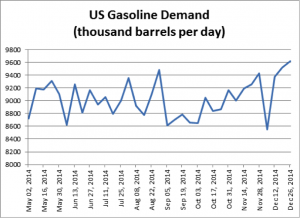Puncturing the myth of 14X improvement in biofuels
Jim Lane was demonstrating some of his usual skepticism when he took on the story of a 14X improvement in the production of biofuels last week.
The story began with an item in Renewable Energy World, Green Car Congress and several other publications. The National Renewable Energy Laboratory published a report on its website stating that a bacterium had been discovered that processed biofuel from cellulose material at 14 times the rate of previously used bacteria.
Lane starts with an apology as to why Biofuels Digest didn’t get too excited about this announcement.
You may have wondered why the discovery was not also hailed in The Digest this week, and on the topic there’s good and bad news, friends.
The good news is that such an enzyme exists, though it doesn’t quite perform at the 14X level and isn’t out of the lab yet. The bad news is that the research that inspired the article actually was published in Science in 2013. Sorry, folks, not a new breakthrough.
First, Lane takes these publications to school for a little elementary arithmetic. The articles said that the new microbe “revealed twice the total sugar conversion in two days” that the present microbe “usually produced in seven.” But as Lane points out, that means it’s 7X as effective, not 14X. But “What does it matter,” he says. “Two of the stubborn problems in converting cellulose to fuels have been the cost of enzymes and the capex [capital expenditures] associated with the technology.” Neither problem is really addressed by the new enzyme.
Actually, the new enzyme – caldicellulosedisruptor bescii, which was discovered in a region of hot springs and land on Russia’s Kamchatka Peninsula — does hold some promise. Because they are so tolerant of heat (up to 193 degrees F), they promise to eliminate the pretreatment of cellulosic material, which would mean a huge saving in processing. Almost half the cost of reducing cellulosic material to sugars comes in pre-treatment. The trick will be getting the process that has been demonstrated in the lab to be repeated on a commercial scale. “Let’s locate all of this where it is, which is in the lab. Which is about 10 years from appearing in an at-scale process somewhere, you average out the timelines for bringing processes based on other microbes to full commercial scale.”
Which is to say, no one has shown that these results can be achieved in a 500 liter fermenter, much less a million liter monster as we see in commercial scale operations. There’s going to be, lime, zero knowledge at this stage about the behavior of these microbes in a fermenter under the incomplete mixing conditions that almost invariably are found at scale.
So, let’s keep the risks in mind, and the timelines, too – even as we hail a genuinely promising and fascinating scientific advance.
Lane has some quiet optimism about the process itself. He isn’t as entirely cynical as he would let on.
There has indeed been some research showing that the CelA bacteria can handle large quantities of cellulosic material in a commercial setting. As BioDigest reported last year, “a group of researchers led by the University of Georgia’s Mike Adams demonstrated that caldicellolusiruptor could “without pretreatment, break down biomass, including lignin, and release sugars for biofuels and chemicals production.” The group wrote in Energy & Environmental Science that “the majority (85%) of insoluble switchgrass biomass that had not been previously chemically treated was degraded at 78 °C by the anaerobic bacterium Caldicellulosiruptor bescii.)”
Digesting switchgrass and other cellulosic material into sugars — which can easily be converted to ethanol — would be a huge advance, even if it took ten years to bring into play. Even if it’s not the miracle that some have touted, it’s a huge advance. The question of which publication broke the story first will fade, and we’ll soon know if the new bacteria really can help us turn seemingly intractable vegetable material into a useful fuel.


